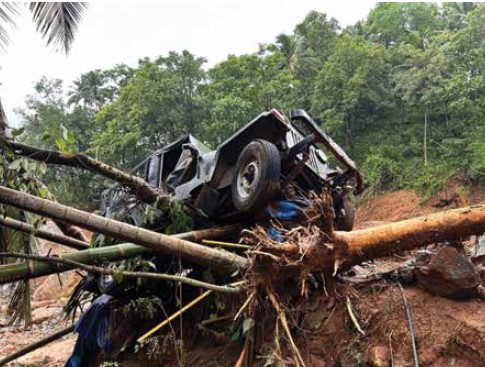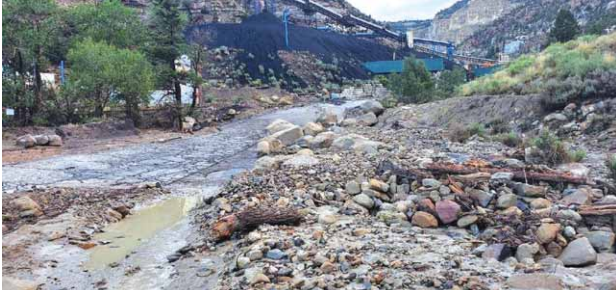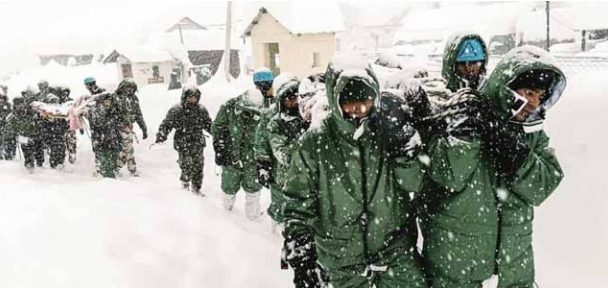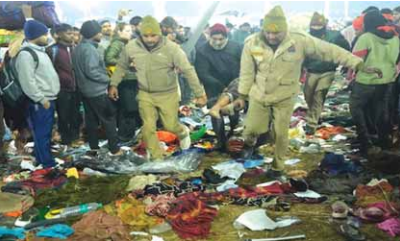On July 30, 2024, at approximately 5:45 AM IST, a devastating landslide struck the serene village of Vilangad in the Kozhikode district of Kerala, leaving a trail of destruction in its wake. This catastrophic event was triggered by relentless heavy rains that have plagued the region, resulting in the tragic loss of at least one life. The landslide mirrored the recent tragedy in Wayanad, revealing a disturbing pattern of natural disasters that have been afflicting the Western Ghats region.
As the early morning light broke, debris comprising soil and stones cascaded down the hills, wreaking havoc on the village. A preliminary assessment conducted by the Geological Survey of India confirmed that the incessant downpour was the primary catalyst for the landslide. The incident was not an isolated occurrence; multiple landslips unfolded across nine different locations in Vilangad, completely obliterating 13 houses and causing varying degrees of damage to many others. The extent of destruction was alarming, with preliminary estimates projecting losses around ₹100 crore, which includes significant damages to infrastructure and private properties.
In the immediate aftermath of this disaster, rescue and relief operations were launched, drawing in a collaborative effort from numerous agencies, including the Indian Army, Navy, and the National Disaster Response Force (NDRF). Local authorities, alongside volunteers from various organizations, have tirelessly worked to assist affected families and restore some semblance of order amidst the chaos. However, the situation has been exacerbated by the destruction of about 15 bridges and the crippling disruption of power supply, severely hindering the pace and efficacy of relief efforts in Vilangad.
Communication has emerged as a significant barrier during rescue operations. According to a senior official from the Vanimel Panchayat, the absence of reliable mobile phone connectivity has impeded coordination, with even social media communications facing challenges. “The lack of proper connectivity or any alternate arrangement would impede future relief work in the disaster-hit areas,” the official stated, highlighting the need for improved infrastructure to facilitate timely responses in times of crisis.
The reconstruction of vital bridges and roads has become paramount for restoring vehicle movement in the affected areas. Currently, the only means for locals to traverse the disaster-struck regions involves makeshift pedestrian pathways across temporary bridges. As the Panchayat authorities grapple with the immediate challenges of post-disaster recovery, an engineering team is conducting thorough assessments to gauge the total damage incurred. The urgency of these evaluations is underscored by the need for rehabilitation aid from the Disaster Management Authority.
While the community has witnessed an outpouring of support from various charity organizations willing to assist with financial resources to rebuild homes for the affected families, the logistical challenges remain daunting. The process of identifying suitable land for reconstruction and completing building works is expected to take several months. Until then, temporary accommodations will be necessary for those displaced by the disaster. K. Vinodan, the Panchayat Secretary, noted that the community has been fortunate to receive generous donations that have enabled the provision of food, medicines, and clothing to those housed in relief camps. “Stranded people in various villages are also under care now by supplying all essential provisions in the form of kits,” he stated.
The broader implications of this landslide extend beyond the immediate destruction and loss of life; they reflect a growing vulnerability within the region to natural disasters exacerbated by climate change. As communities face these recurring challenges, the need for resilient infrastructure and effective disaster management strategies has never been more pressing. With the spotlight often shining on larger incidents, like the catastrophic Meppadi landslide, it is crucial that smaller but equally devastating events in villages like Vilangad receive the focused attention and support they need for recovery and rebuilding.
In conclusion, the landslide in Vilangad stands as a stark reminder of the increasing frequency and severity of natural disasters in the region. As the community grapples with the aftermath, it is vital that both local and state authorities prioritize disaster preparedness, infrastructure resilience, and community support to mitigate the impacts of future calamities. The road to recovery may be long and fraught with challenges, but with collective effort and a commitment to building resilience, the people of Vilangad can emerge from this crisis stronger and more united than ever before.
Source:
www.thehindu.com






